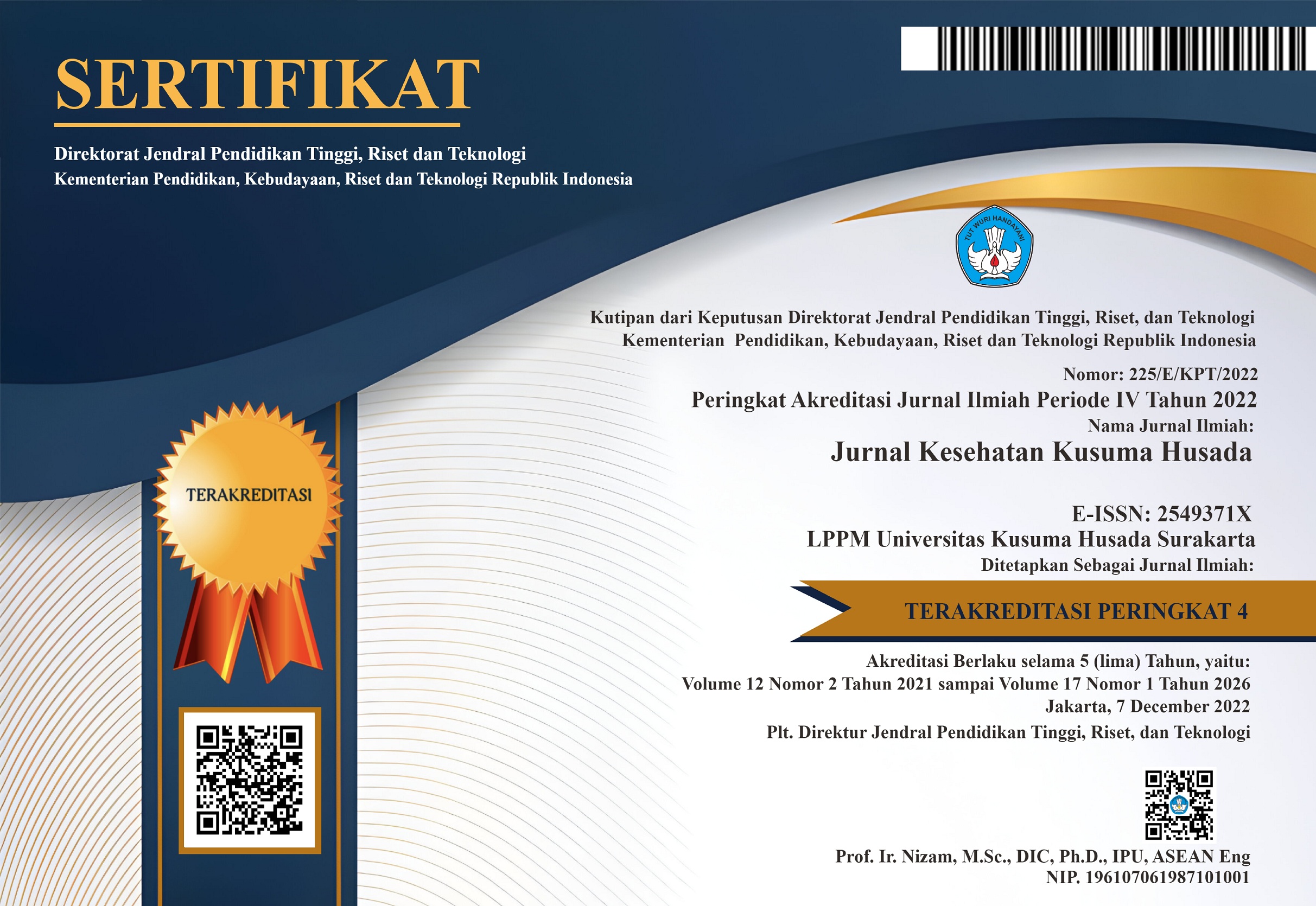UPAYA PENINGKATAN SERAT TEMPE KEDELE MELALUI PENAMBAHAN BUAH PARE (MOMORDICA CHARANTINA) SEBAGAI PANGAN FUNGSIONAL
Abstract
ABSTRAK
Tempe merupakan makanan yang kaya zat gizi, dan baik bagi kesehatan tubuh. Tetapi saat pengolahan tempe terjadi penurunan kadar serat pangan, yaitu dari serat kedelai sebesar 3,2 gram per 100 gr bahan. turun menjadi 1,6 gr per 100 gr bahan. padahal serat makanan sangat penting terutama untuk mencegah konstipasi, obesitas, penyakit jantung, dan diabetes. Serat banyak terdapat pada buah dan sayur, misalnya pare (Momordica charantina). Oleh sebab itu, penulis ingin mengetahui peningkatan kadar serat pada tempe kedelai yang disubstitusi dengan buah pare. Penelitian bertujuan untuk mengetahui : 1) Potensi pare (Momordica charantina) sebagai bahan yang mampu meningkatkan kadar serat pangan pada tempe kedelai; 2) Perbandingan serat pangan antara tempe kedelai dengan tempe pare; 3) Potensi tempe pare sebagai pangan fungsional; 4) Potensi tempe pare untuk dapat diterima di masyarakat. Penelitian dilakukan pada bulan Februari - Maret 2016 di pabrik tahu DELE EMAS Krajan RT 02 RW 01, Mojosongo, Surakarta, sedangkan uji kadar serat dilakukan di Universitas Setia Budi Surakarta. Kesimpulan penelitian adalah : 1) Buah Pare (Momordica charantina) memiliki potensi sebagai bahan pembuat tempe berserat tinggi; 2) Kadar serat tempe pare per 100 gr adalah
8,17% sedangkan tempe kedele 6,27%.; hasil penelitian LIPI 100 gr tempe terdapat serat sebesar 1,4%;
3) Tempe pare merupakan pangan fungsional karena memiliki kadar serat makanan yang tinggi; 4)
Tempe pare dapat diterima di masyarakat.
Kata kunci : tempe pare (Momordica charantina), serat makanan, pangan fungsional
ABSTRACT
Tempe (fermented soybean) is a high nutrients food, and good for health. But when the soybean processing there are decreased levels of fiber dietary, that is soybean fiber of 3.2 grams per 100 grams of material decrease to 1.6 grams per 100 grams of material. Dietary fiber is especially important to prevent constipation, obesity, heart disease, and diabetes. Fiber found in many fruits and vegetables, such as bitter melon (Momordica charantina). Therefore, the authors want determined the increasing of fiber content in soybean tempe substituted by bitter melon. The study objectives were determined: 1) the potential of bitter melon (Momordica charantina) as the material that capable to increase the fiber content of soybean tempe; 2) Comparison of dietary fiber between soybean tempe and bitter melon tempe; 3) The potential of bitter melon tempe as a functional food; 4) Potential of bitter melon tempe to be accepted in the society. This study was conducted in mid-February to March 2016 for the tofu factory of DELE EMAS Krajan RT 02 RW 01, Mojosongo, Surakarta. While fiber content testing was done at the Setia Budi University of Surakarta. The study conclusions are : 1) Bitter melon (Momordica charantina) has potential as high-fiber tempe ingredient; 2) Levels of bitter melon tempe fiber per 100 grams is 8.17%, while soybean tempe is 6.27%. The LIPI research is fibers per 100 grams tempe is 1.4%; 3) Bitter melon tempe is a functional food because it has high levels of dietary fiber; 4) Bitter melon tempe was accepted in the society
Keywords : bitter melon (Momordica charantina) tempe, dietary fiber, functional foods
References
Downloads
Issue
Section
License
The copyright of the published articles belongs to Jurnal Kesehatan Kusuma Husada.

This work is licensed under a Creative Commons Attribution 4.0 International License.
















